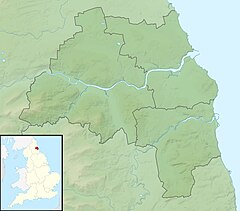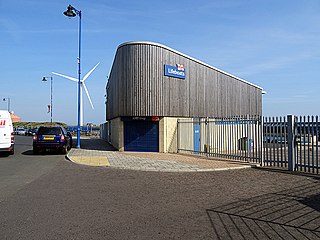
Blyth Lifeboat Station is located at the Port and seaside town of Blyth, in the south east corner of the county of Northumberland, approx. 13 miles (21 km) north of Newcastle upon Tyne.

The Mumbles Lifeboat Station is at Mumbles Pier, located at the south-western corner of Swansea Bay, near the village of Mumbles, within the city and county of Swansea, in the historic county of Glamorgan, Wales.

Llandudno Lifeboat Station is located in the town and seaside resort of Llandudno, sitting on the Creuddyn peninsula, in Conwy County Borough, North Wales.

Barmouth Lifeboat Station is located in Barmouth, a town at the mouth of the Afon Mawddach river in Gwynedd, Wales. A lifeboat was first stationed here by the Royal National Institute for the Preservation of Life from Shipwreck (RNIPLS) in 1828.
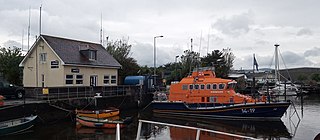
Arklow Lifeboat Station is located at South Quay in Arklow, County Wicklow, a harbour town at the mouth of the River Avoca, on the east coast of Ireland.

Douglas Lifeboat Station is located at Battery Pier, Douglas Head, in Douglas, capital of the Isle of Man, a British Crown Dependancy.

Fleetwood Lifeboat Station is located on The Esplanade at the port of Fleetwood, a Lancashire town at the north end of The Fylde, situated at the mouth of the River Wyre.
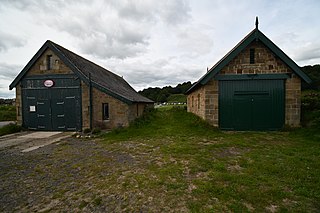
Alnmouth Lifeboat Station is a former Royal National Lifeboat Institution (RNLI) station, which was located at the village of Alnmouth, near the town of Alnwick, in the county of Northumberland.
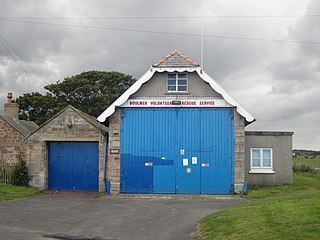
Boulmer Lifeboat Station is a former Royal National Lifeboat Institution (RNLI) station, which was located at the village of Boulmer in the county of Northumberland.
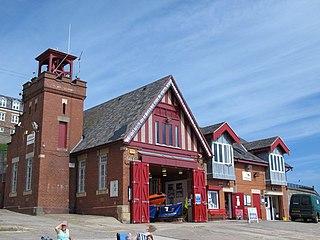
Cullercoats Lifeboat Station is located on the north side of Cullercoats Harbour, in the town of Cullercoats, North Tyneside, in the county of Tyne and Wear.
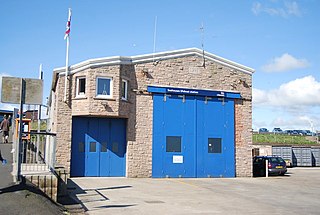
Seahouses Lifeboat Station is located in the village of Seahouses, in the county of Northumberland.

Penmon Lifeboat Station was located at Penmon Point, north east of the town of Beaumaris, on the eastern tip of the Isle of Anglesey, Wales.

Lytham Lifeboat Station is a 'former' lifeboat station,, located in the Fylde coast town of Lytham, Lancashire.

Sunderland Lifeboat Station has two locations in the port city of Sunderland, which sits at the mouth of the River Wear, in the county of Tyne and Wear.

Berwick-upon-Tweed Lifeboat Station is located on the south bank of the River Tweed at Tweedmouth, part of the town of Berwick-upon-Tweed, in the county of Northumberland.

Hornsea Lifeboat Station was located at the junction of Burton Road and Eastbourne Road, in the town of Hornsea, in the county of the East Riding of Yorkshire.

Dungeness Lifeboat Station is located on Dungeness Road, about 3.5 miles (5.6 km) south-east of the town of Lydd, on the cuspate foreland of Dungeness, on the Kent coast.

Southport Lifeboat Station is a former lifeboat station, located in the Victorian seaside town of Southport, situated to the south of the River Ribble estuary, historically in the county of Lancashire, now Merseyside.
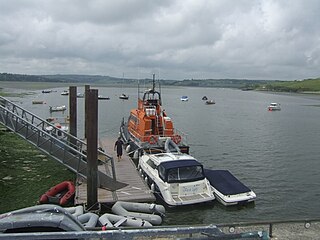
Courtmacsherry Harbour Lifeboat Station is located on Sea Road, in the village of Courtmacsherry, County Cork, on the southern shore of the Argideen River estuary, approximately 45 kilometres (28 mi) south west of Cork, on the south coast of Ireland.

Ferryside Lifeboat Station, also known as Carmarthen Bay Lifeboat Station, was located at Ferryside Beach in Ferryside, a village in the community of St Ishmael, on the east shore of the River Towy estuary, overlooking Carmarthen Bay, approximately 9 miles (14 km) south-west of Carmarthen, in Carmarthenshire, South Wales.


